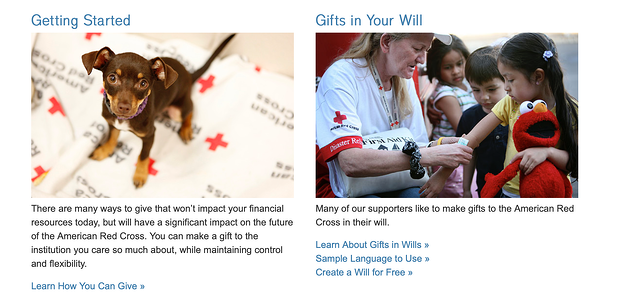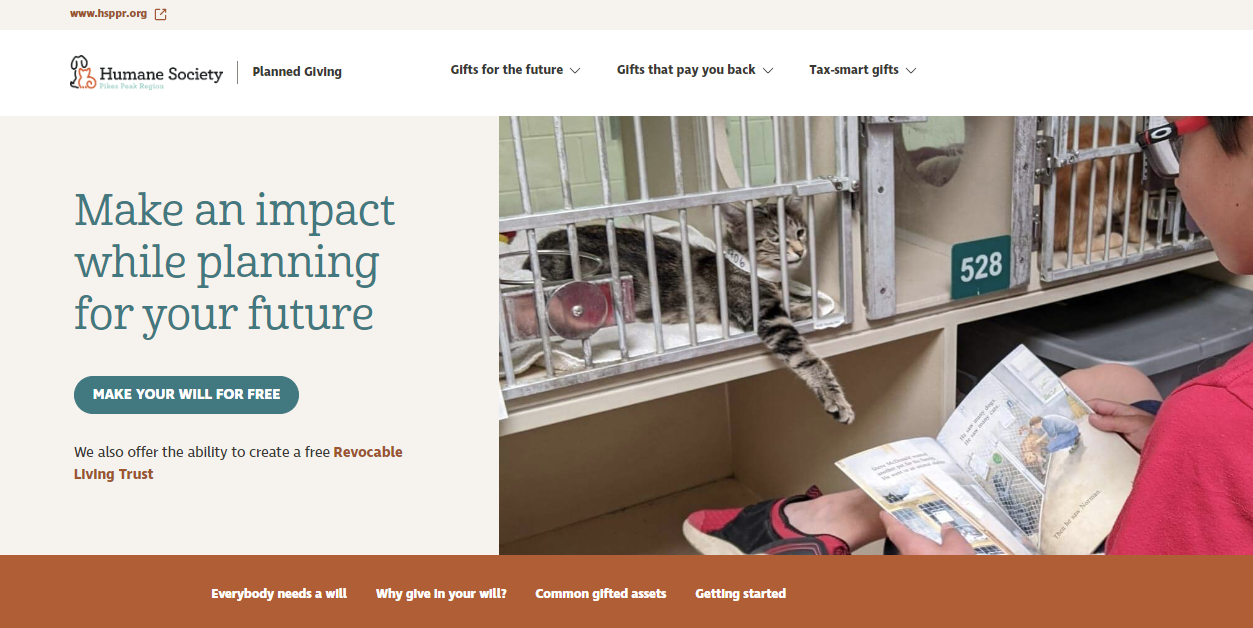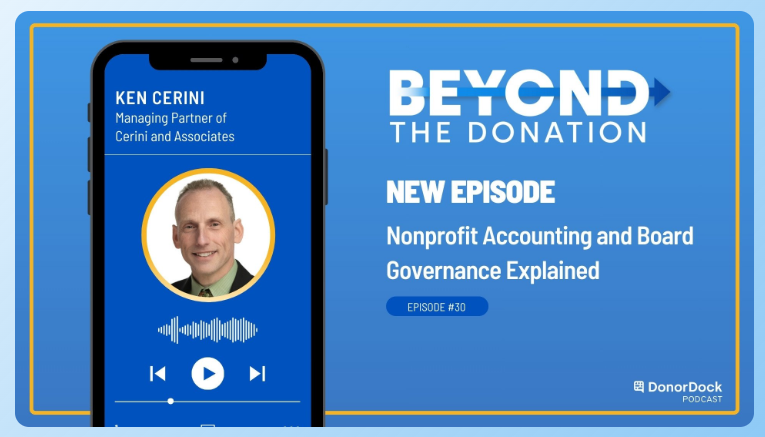Planned giving is a significant opportunity for nonprofits large and small. Not only does it bring predictable, diversified income, but it also deepens your relationships with donors, encourages larger annual gifts, and opens the door to new forms of non-cash giving.
As demographic shifts like the Great Wealth Transfer unfold, planned giving is more than just a trend for nonprofits, it’s a valuable investment in your organization’s future and sustained impact.
Let’s say you’ve already taken the first steps to establish your own planned giving program—great! You’ve learned about planned giving, identifying prospects, and more. You’re ready to turn on the faucet for your prospect pipeline, but wait… Have you laid the groundwork for successful outreach?
You can’t sustain any giving program without effective outreach strategies to keep it on donors’ minds and reach larger audiences over time, and planned giving is no exception. Let’s take a look at the essentials to understand when laying out your planned giving outreach strategy.
What you need for planned giving outreach
To promote your planned giving program consistently, you’ll need a few essentials:
- A database or CRM that allows you to easily track touchpoints with your donors
- Planned giving tools on your website that report new bequests (or a clear online method for donors to self-report new bequests)
- Marketing collateral for your program, including email and social media templates, letterheads, photos, donor testimonials, surveys, and more
- Mentions of planned giving on your website, ideally on your main Ways to Give page and on a standalone page or dedicated planned giving microsite
Here’s an example of an effective mention of planned giving on the American Red Cross’s Ways to Give page, plus links to other helpful information for donors:
You can expand your outreach tactics later once you learn more from your initial efforts, but these key resources will be enough to begin promoting your program. As long as you have data about your donors and prospects, materials to send them, a helpful online planned giving presence, and a way to track responses, you have the building blocks of an effective strategy.
Brush up on how to talk about planned giving
Learning how to communicate about planned giving is one of the biggest differences between it and other types of giving. It can be a sensitive topic, and different rationales and motivations come into play than with more straightforward cash fundraising.
Before sinking more time into developing your outreach strategy and developing marketing materials, you should feel confident speaking about planned giving.
To discuss planned giving effectively, focus heavily on long-term impact and legacy, and avoid talking about death. Anchor your messaging with explanations of how these gifts drive special impact for your mission and sustain your work over time. It’s also a uniquely meaningful way for donors to give and create lasting legacies with the important causes in their lives and their families’ lives.
Social proof also plays an important role in effective communication about planned giving. By demonstrating that others trust this way of giving and have found it to be a rewarding experience, you greatly simplify the decision-making process for prospects. After all, it’s a brand new way to donate for many prospects.
The best long-term strategy for conveying social proof and promoting your program (while also stewarding your relationships with planned gift donors) is to create a legacy giving society. This special membership makes the benefits of giving more concrete to donors and prospects alike.
If you haven’t yet considered creating a small membership program for planned gift donors, explore your options. It’s an easy way to accomplish several objectives at once—demonstrating social proof, attracting new donors, engaging and stewarding existing donors, and growing your program’s visibility in the community.
Create a planned giving outreach strategy
With the right resources on hand and a clear understanding of how to discuss planned giving and your program, you can begin laying out an outreach strategy.
Many nonprofits choose to take a two-track approach to promoting planned giving: a broad track and a targeted track.
- The broad outreach strategy will generally promote your program to everyone so that they’re aware of it and so interested individuals can get in touch to learn more.
- The targeted outreach strategy will focus on the individuals you proactively identify as prospects so that you can provide more personalized and intentional experiences.
Why separate the two tracks? As with other giving programs that you may run as part of your development efforts, it’s important to effectively prioritize your efforts. We know that personalization is essential for securing high-value gifts (or any high-priority gifts for your organization) and stewarding these relationships. Raising general awareness shouldn’t eat up a ton of your time. Instead, focusing on a smaller set of prospects who you think are the most likely to give will allow you to drive better outcomes more efficiently. Then, as you learn more about your donors and strategies, you can refine your approach.
Let’s take a look at the general steps you should follow when developing these two outreach methods for planned giving:
Broad outreach for planned giving
To begin broadly promoting your planned giving program, follow these steps:
1.) Develop your marketing collateral. For a broad approach, you’ll need some templated language introducing your program, eye-catching photos and graphics, and a handful of standalone emails and social media posts that generally discuss the value of planned giving for you and your donors.
2.) Integrate broad mentions into your messages. Next, add small mentions of planned giving to your regular communications, like your newsletter. The goal isn’t to shine a bright spotlight on your program but rather to make sure that those who are interested can learn more if they want. These mentions should include links straight to your contact page or planned giving microsite.
3.) Create a marketing calendar. For messages dedicated solely to planned giving, lay out a calendar to ensure they’re evenly spaced and won’t get lost or overshadowed by other priorities (like your year-end fundraising push, for instance). We recommend creating material specifically for National Make-a-Will Month in August—it’s a perfect opportunity to generally introduce your program while providing helpful resources to your community.
4.) Consider the whole journey. Support your broad mentions and blasts with a stellar online experience. As discussed above, planned giving should be represented on your Ways to Give page and ideally on a dedicated page or microsite. Make it easy for anyone interested in planned giving to learn more and convert, or take a specific target action. These target actions will most likely be creating a bequest online or contacting you to learn more about your program.
This strategy allows you to build a relatively hands-off prospect pipeline. When your broad audience is aware of your planned giving program and you make it easy for them to express their interest, you’ll identify prospects to then funnel into more personalized experiences (like the targeted outreach approach described below).
Targeted outreach for planned giving
To take a targeted marketing approach for smaller sets of planned giving prospects, use these steps:
1.) Develop targeted collateral. You’ll also need to develop promotional material for your targeted strategy, but it should be more in-depth and specific, like a short email stream highlighting the benefits of planned giving or a mailer specifically about your legacy giving program. Consider your donors’ motivations—impact, legacy, tax benefits, etc.—and build your messaging around them.
2.) Create cadences for your pipeline stages. Think about exactly how you’ll contact and engage your prospects at different stages in their planned giving journeys. The further one progresses, the more one-on-one contact they should receive. A mix of pre-written emails, mailers, phone calls, and event invites works well.
3.) Personalize whenever possible. Consider what you’ve learned about prospects as individuals and their motivations for giving, then use that information to shape your outreach and start conversations. Even if you don’t have time to personally reach out to every prospect on your list, email templates can be filled in with personalized details.
4.) Engage your top prospects one-on-one. For those you identify as the highest-value and most likely to give, personal calls and emails from a gift officer at your nonprofit will be best for learning more directly from the prospect, answering questions, and deepening the relationship leading up to a formal solicitation.
5.) Ensure you have a moves management process. For personalized, targeted outreach, keeping track of when you’ve last spoken to prospects and which communications they’ve received will be particularly important. Throughout the whole process, note these touchpoints and personal details you learn in your database or CRM so that you can easily check the progress of your pipeline over time (and study the overall effectiveness of your outreach strategies).
When engaging with your top planned giving prospects, the outreach and fundraising processes become fairly integrated, as is the case in many development and major giving contexts. The key to success is organization and smart allocation of your time and resources. Learning how to identify and qualify prospects will be essential for ensuring you’re always putting your attention where it will be likely to yield the best impact and strongest relationships possible.
Your planned giving program can thrive when supported by a robust outreach strategy, one rooted in communication best practices, full of social proof, and designed to help you efficiently cast a wide net while focusing on your top prospects.
If you’re ready to build or update your own outreach strategy, start by auditing your current process and program materials. Find gaps and prioritize the changes and investments you want to make. Remember, starting small and intentionally improving as you go is a winning strategy.
Patrick Schmitt
Co-CEO
FreeWill
Patrick Schmitt and fellow FreeWill co-CEO Jenny Xia founded at Stanford University’s Graduate School of Business in 2016. FreeWill’s charitable giving platform makes it easier for nonprofit fundraising teams to unlock transformational gifts, and to date has generated over $6.6 billion in new gift commitments for thousands of nonprofit organizations. Patrick hosts FreeWill’s popular webinar series, educating thousands of nonprofit fundraising professionals each month about planned and non-cash giving strategies.
Before FreeWill, Patrick was the Head of Innovation at Change.org, where he helped grow the organization to 100 million users in four years. Prior to that, he ran email marketing for President Obama and served as Campaign Director for MoveOn.org.








